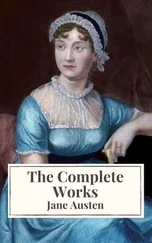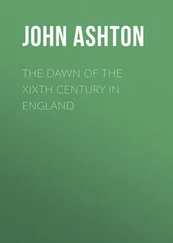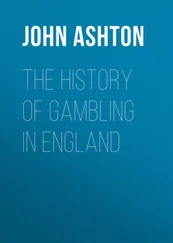John Ashton - The Fleet. Its Rivers, Prison, and Marriages
Здесь есть возможность читать онлайн «John Ashton - The Fleet. Its Rivers, Prison, and Marriages» — ознакомительный отрывок электронной книги совершенно бесплатно, а после прочтения отрывка купить полную версию. В некоторых случаях можно слушать аудио, скачать через торрент в формате fb2 и присутствует краткое содержание. Жанр: foreign_antique, foreign_prose, на английском языке. Описание произведения, (предисловие) а так же отзывы посетителей доступны на портале библиотеки ЛибКат.
- Название:The Fleet. Its Rivers, Prison, and Marriages
- Автор:
- Жанр:
- Год:неизвестен
- ISBN:нет данных
- Рейтинг книги:4 / 5. Голосов: 1
-
Избранное:Добавить в избранное
- Отзывы:
-
Ваша оценка:
- 80
- 1
- 2
- 3
- 4
- 5
The Fleet. Its Rivers, Prison, and Marriages: краткое содержание, описание и аннотация
Предлагаем к чтению аннотацию, описание, краткое содержание или предисловие (зависит от того, что написал сам автор книги «The Fleet. Its Rivers, Prison, and Marriages»). Если вы не нашли необходимую информацию о книге — напишите в комментариях, мы постараемся отыскать её.
The Fleet. Its Rivers, Prison, and Marriages — читать онлайн ознакомительный отрывок
Ниже представлен текст книги, разбитый по страницам. Система сохранения места последней прочитанной страницы, позволяет с удобством читать онлайн бесплатно книгу «The Fleet. Its Rivers, Prison, and Marriages», без необходимости каждый раз заново искать на чём Вы остановились. Поставьте закладку, и сможете в любой момент перейти на страницу, на которой закончили чтение.
Интервал:
Закладка:
The Westbourne took its rise in a small pond near "Telegraph Hill," at Hampstead; two or three brooklets joined it, and it ran its course across the Finchley Road, to the bottom of Alexandra Road, Kilburn, where it was met by another stream, which had its source at Frognal, Hampstead. It then became the West bourne, as being the most westerly of all the rivers near London, taking the Wallbrook, the Fleet, and the Tybourne.
Its course may be traced down Kilburn Park Road, and Shirland Road. Crossing the Harrow Road where now is Westbourne Park Station, Eastbourne and Westbourne Terraces mark the respective banks, and, after crossing the Uxbridge Road, it runs into the Serpentine at the Engine House. Feeding that sheet of water, it comes out again at the Albert Gate end, runs by Lowndes Square, Cadogan Place, &c., and, finally, falls into the river at Chelsea Hospital.
CHAPTER III
THE Fleet, as far as can be ascertained, owes its birth to an ornamental water, fed by springs – one of the numerous ponds in Highgate and Hampstead – in the park of Ken Wood, the seat of Earl Mansfield, now occasionally occupied by the fourth successor to that title; who, being keeper of the royal Castle of Scone, prefers, as a rule, his northern residence. In the No Popery riots of 1780, with which Lord George Gordon was so intimately connected, Ken Wood House was on the brink of being destroyed by the rioters, who had, already, wrecked his lordship's house in Bloomsbury Square, and destroyed his most valuable library. Tradition says that Ken Wood was saved owing to the landlord of "The Spaniards," well known to all pedestrian frequenters of Hampstead, giving them his beer, &c., until they were incapacitated, or unwilling, to fulfil their quest, meanwhile sending messengers for the Horse Guards, who opportunely arrived, and prevented the destruction of the mansion. It is quite possible that this is a true story, for a footnote (p. 69) in Prickett's "History of Highgate" says: "The following is copied from a receipt of one of the constables of the Hundred of Ossulston: 'Received 8s. 6d., being the proportion taxed and assessed for and towards the payment of the several taxations and assessments which have been made upon the said Parish (amounting to the sum of £187. 18s. 7d.) towards an equal contribution, to be had and made for the relief of the several inhabitants of said Hundred; against whom, the several persons who were damnified by rioters within the same Hundred, in the month of June, 1780, have obtained verdicts, and had their executions respectively.'"
Commencing thus in one of the prettiest parts of the most picturesque suburbs of London, it flows from one to the other, right through the chain of the Highgate Ponds, fed by several rills, the first being near the Hampstead end of Millfield Lane – which is, by some, regarded as its source. From the lower pond it crossed the Highgate Road, and, for some distance, it ran parallel with it, although a little way eastward. It again crossed the Highgate Road not far from its junction with the Kentish Town Road, the course of which it followed, until it came to Hawley Road, where it was joined by a sister brook, whose source was the pond in the Vale of Health at Hampstead, flowing from which, it was fed by a brooklet, over which the abortive viaduct of Sir Thomas Marion Wilson's construction is carried. It ran into, and through, the Hampstead Ponds, which end at the lower east heath, near Pond Street (a locality easily recognized when once any one has seen St. Stephen's Church, Haverstock Hill, one of the most beautiful churches in London). These ponds are immortal, if they needed immortality, as the very first page of "Pickwick" gives an entry in the Transactions of the Pickwick Club:
" May 12, 1827. Joseph Smiggers, Esq., P.V.P., M.P.C., presiding. The following resolutions unanimously agreed to —
"'That this Association has heard read, with feelings of unmingled satisfaction, and unqualified approval, the paper communicated by Samuel Pickwick, Esq., G.C., M.P.C., entitled, "Speculations on the Source of the Hampstead Ponds, with some observations on the Theory of Tittlebats"; and that this Association does hereby return its warmest thanks to the said Samuel Pickwick, Esq., G.C., M.P.C., for the same.'"
Its memory is still retained in the Fleet Road.
On its way through Kentish Town it passed through a purely pastoral country, such as we, who know the district only as covered with houses, can hardly reconcile with existing circumstances. The Guildhall Collection relating to the Fleet River, is very rich in water-colour drawings and pen-and-ink sketches of undoubted authenticity, and from them I have selected what, in my opinion, are the most suitable for this work. 16 16 See pages 28 , 29, 30, 31, &c.
From the above, and this view of Highgate, so late back as 1845, we can fairly judge of the pleasant scenery which existed almost at our doors – before the iron roads brought population, which begat houses, which destroyed all rusticity, leaving bricks and mortar on the site of verdant meads, and millions of chimneys vomiting unconsumed carbon and sulphur, in the place of the pure fresh air which once was dominant.
Here we see the Fleet running its quiet course – and the other sketches bear witness to its rurality.
After the Fleet had recrossed the Highgate Road near the junction of that road and the Kentish Town Road, it passed near the Gospel Oak , which now gives its name to a railway station in the locality. About this oak, there was a tradition that it was so called because St. Augustine preached underneath its boughs – a fact which is probably as correct as the story that the Church of St. Pancras was the first Christian Church in England. In truth, there are, or were, many Gospel Oaks and Elms throughout the country; for instance, there is an iron foundry near the parishes of Tipton and Wednesbury called Gospel Oak Works . It was, as a matter of fact, a traditionary custom, in many places, when, on Holy Thursday (Ascension Day), the parochial bounds were beaten, to read a portion of the Gospels under some well-known tree, and hence its name. One or two quotations will easily prove this.
In the "Bury Wills," p. 118, is the following passage in the will of John Cole of Thelnetham, dated May 8, 1527: "Item, I will haue a newe crosse made according to Trappett's crosse at the Hawe lanes ende, and set vp at Short Grove's end, where the gospell is sayd vpon Ascension Even, for ye wch I assigne xs."
And, in the poem of Herrick's "Hesperides," which is addressed "To Anthea."
Dearest, bury me
Under that holy Oke, or Gospel Tree;
Where, (though thou see'st not,) thou may'st think upon
Me, when thou yerely go'st procession."
It also passed near Parliament, or Traitors', Hill – a name which is much in dispute; some maintaining that it was fortified by the Parliamentary Army, under Cromwell, for the protection of London, others that the 5th of November conspirators met here to view the expected explosion of the Houses of Parliament. This, which forms the most southern part of Hampstead Heath, and therefore the nearest, and most accessible to the great bulk of Londoners, has a beautiful view of Highgate and London, and has, I am happy to say, been preserved as an open space for the public.
We have now followed the Fleet in its course to Kentish Town, the etymon of which is, to say the least, somewhat hazy. Being so, of course, an immense amount of theory has been expended upon it. Some contend that it springs from the Prebendary attached to St. Paul's Cathedral, of Cantelupe, or Cantelows, now (in Crockford , called Cantlers): one antiquary suggesting that it owes its name to the delta formed by the junction of the two branches of the Fleet – from Cant or Cantle , a corner; – whilst yet another authority thinks that, as the Fleet had its source from Ken Wood – it was called Ken-ditch – hence Kenditch or Kentish Town. Be it as it may, it was a very pleasant and rural suburb, and one of some note, for herein William Bruges, Garter King-at-Arms, had a country house, at which he entertained, in the year 1416, the Emperor Sigismund, who came over here, in that year, to try and mediate between our Henry V. and the King of France.
Читать дальшеИнтервал:
Закладка:
Похожие книги на «The Fleet. Its Rivers, Prison, and Marriages»
Представляем Вашему вниманию похожие книги на «The Fleet. Its Rivers, Prison, and Marriages» списком для выбора. Мы отобрали схожую по названию и смыслу литературу в надежде предоставить читателям больше вариантов отыскать новые, интересные, ещё непрочитанные произведения.
Обсуждение, отзывы о книге «The Fleet. Its Rivers, Prison, and Marriages» и просто собственные мнения читателей. Оставьте ваши комментарии, напишите, что Вы думаете о произведении, его смысле или главных героях. Укажите что конкретно понравилось, а что нет, и почему Вы так считаете.












